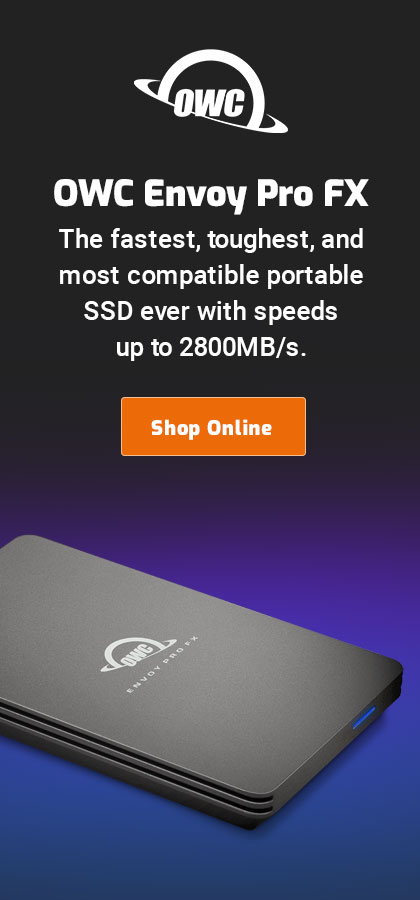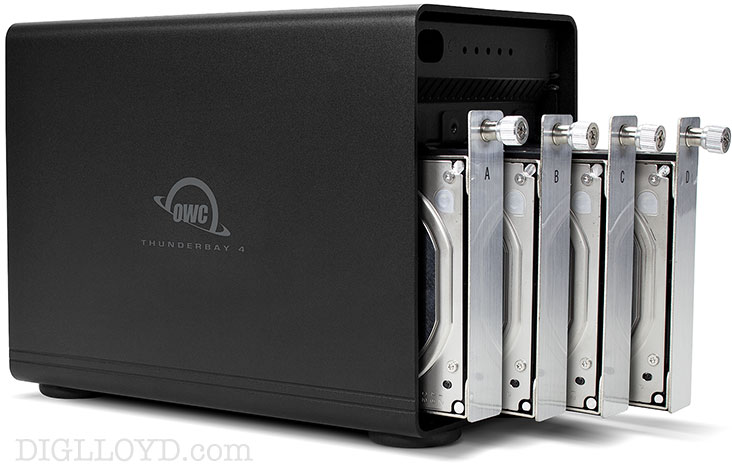
|

|

|

$610 SAVE $110 = 15.0% ZEISS 32mm f/1.8 Touit Lens for FUJIFILM X OUT OF STOCK in Lenses: Mirrorless
|

|
Dangerous (to your data) Misconceptions about Backup eg RAID is Not a Backup!
What constitutes a robust backup approach?
A robust backup approach must have at least the following properties:
- Physical risks—not subject to the same physical risks as the original data, e.g., stored well away from the source computer.
- Different hardware—a backup on the same drive as the original is not a backup. Multiple backups on the same drive of the same data are one backup; they all are lost together; they are only semi-redundant.
- Redundancy—in the event that a backup is needed, a single backup when needed becomes the one and only original. A bare minimum of two full backups is essential, with three or more preferred, all on separate drives, and at least two of them stored away from the computer and not subject to the same physical risks.
- Data integrity—a backup might be initially fine, but that is not guaranteed to last over time. It might go bad, or something might go wrong with the backup itself. Using IntegrityChecker for data validation for a backup or the 10th copy of a copy of a... backup proves that it’s good.
Tips
- Eliminate potential for user errors: use cloning and establish naming conventions.
- Eliminate potential for hardware confusion: mixing many too-small and old drives for partial this and partial that is a serious risk (from complexity). Migrate to large external hard drives with a long lifespan (enough capacity).
- Redundancy can include mixed storage types, e.g., hard drive backup, DVD or BluRay disks, cloud storage.
- Hard drives as main storage should be replaced every 3-4 years, no more than every 5 years. They should also be erased at least once a year, and a fresh backup made (to re-magnetize and to force use of the drive on which data is stored).
- Always perform manual “sanity checks”: do not assume the backup process has worked. At the least, use the Finder Get Info window on the original and the backup. But the best solution by far is IntegrityChecker.
Misconceptions
#1 My system uses a RAID-1 mirror or RAID-5, so my data is safe.
RAID mirroring and RAID-5 is fault tolerance. RAID is not a backup.
Nor is RAID even a smart move for backups; better to use those resources for more redundant backups rather than waste them on a RAID-based backup.
If the machine is stolen, the RAID is likely to disappear along with it. If there is a fire, flood, massive power surge (lightning), the RAID is likely to be lost also.
#1a My backup drives are RAID so I only need one backup.
This is a grave mistake. Loss or damage to a RAID and it’s gone too. A RAID-0 stripe is even more at risk from failure of any drive in the RAID.
RAID is not only more expensive, it offers less redundancy for the same money, and thus offers little or no value for backup. See Redundancy in the introduction above.
For example, a RAID-1 mirror uses two drives with one power supply, which can also fail, possibly frying both drives. Far better to have two drives each with its own power supply and each thus storable separately, to mitigate physical risks. Three is even better and probably costs no more than the single RAID mirror unit.
#2 Time Machine works great for me .
Time Machine is excellent for short-term protection (versioning, deletion, etc) of new new files—use it as another level of redundancy! But its track record has been sketchy in that it has failed to work properly over time (bugs).
Time Machine is slow to restore, not directly accessible, has a proven history of bugs, is not bootable, tends to fill up with unwanted versions, and almost always is located physically close to the originals on the computer (e.g. directly attached). See notes on RAID above.
#3 Copying files works OK for me.
Perfect memory of what has changed,? Including deep knowledge of where everything lives on the system, as well as the magic abiliy to know when Finder copy silently fails?
High capacity, high-performance fault-tolerant storage for photography and video.
Non-RAID or RAID-0/1/4/5/10.
Capacities up to 72 Terabytes!
#4 No problem, I have a backup connected all the time.
See notes on physical risks.
#5 I have backups on other drives
Are these backups or originals? Based on consulting with nearly 1000 clients, it’s clear that some people think originals on another drive are backups—a grave error in reasoning, and a guarantee of data loss sooner or later.
#6 I have backups on 20 drives, but I’m not sure which ones are which.
A backup system which is confusing or hard to remember is a serious risk. The “savings” of thirteen mixed-size and capacity drives each with partial this and partial that increases the risks of data loss because it becomes difficult to remember what is where and when. Transition (quickly) to high capacity backup drives and cloning.

 diglloydTools™
diglloydTools™


